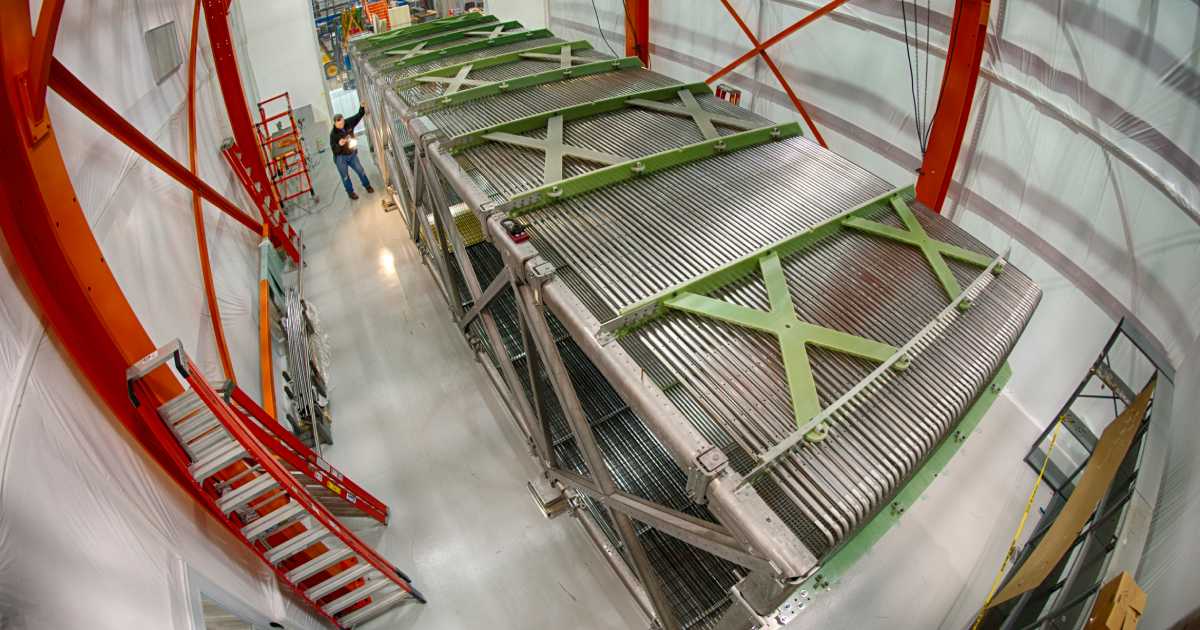The sterile neutrino, a theoretical particle, has been dealt a blow by new data from the MicroBooNE experiment at the Fermi National Accelerator Laboratory of the United States Department of Energy. Researchers from Colorado State University’s Department of Physics were among the 200 experts from across the world that contributed to this important new understanding of how our operates.
The sterile neutrino, a postulated fourth neutrino, has been a potential explanation for abnormalities discovered in previous physics studies for more than two decades. The finding of a new particle would be a tremendous breakthrough in our knowledge of the cosmos.
However, four further investigations released earlier this month by the multinational MicroBooNE consortium find no evidence of the sterile neutrino. Instead, the findings support the Standard Model of Particle Physics, which is the best explanation for how the universe operates according to physicists. The evidence supports the Standard Model’s prediction of three types of neutrinos — no more, no less.
Contributions from the CSU
Michael Mooney, an assistant professor in the Department of Physics, has been a long-time member of the MicroBooNE team, acting as run coordinator for the detector’s inaugural neutrino beam operations in 2015 and 2016. Since then, he has overseen two CSU graduate students, both of whom contributed to the most recent findings.
Ivan Caro Terrazas, a graduate student, worked on electron neutrino reconstruction, which was required for selecting neutrino signal events inside the detector as part of one of three investigations looking for an excess of low-energy electron neutrino events that exceeded expectations.
Muon neutrino reconstruction was worked on by Ryan LaZur, a former graduate student in Mooney’s group. This effort was required to provide a systematic uncertainty limit for the same analysis — looking for an excess of low-energy electron neutrino events in the detector.
According to Mooney, the achievements are the product of years of hard effort by many people, including students, postdocs, technicians, engineers, and teachers.
“It’s incredibly significant to see MicroBooNE finally share these data after being so intimately involved with operations when the detector was originally brought online,” Mooney remarked. “While the most simple explanation for the previous anomaly appears to be disfavored, these findings have significantly advanced our understanding of neutrinos; they will serve as a guiding light for future short-baseline neutrino experiments seeking to explain an anomaly that has yet to be resolved.”
The experiment was conducted
MicroBooNE, a 170-ton neutrino detector the size of a school bus, has been in operation since 2015. Nearly 200 partners from 36 universities in five countries are involved in the multinational project. They employed cutting-edge equipment to capture breathtakingly exact 3D photos of neutrino occurrences and investigate particle interactions in great detail, providing a much-needed probe into the subatomic realm.
Neutrinos are one of nature’s most basic particles. They’re the most numerous particle with mass in our universe, despite the fact that they seldom interact with other matter. They’re also extremely fascinating to physicists, as they’re surrounded by a number of unsolved issues. These mysteries include why their masses are so insignificant and if they are to blame for matter’s hegemony over antimatter in our universe. As a result, neutrinos provide a unique insight into how the cosmos functions on the lowest scales.
According to Fermilab, MicroBooNE’s recent discoveries mark a watershed moment in neutrino research. Scientists are looking into alternative options now that sterile neutrinos have been ruled out as a possible explanation for irregularities in neutrino data. Things as exciting as light formed by other processes during neutrino collisions or as exotic as dark matter, unexplained physics connected to the Higgs boson, or other physics beyond the Standard Model are among them.
A number of CSU researchers are also engaged in Fermilab’s Deep Underground Neutrino Experiment.
Visit the Fermilab website to learn more about the MicroBooNE findings and why the experiment was started in the first place.


